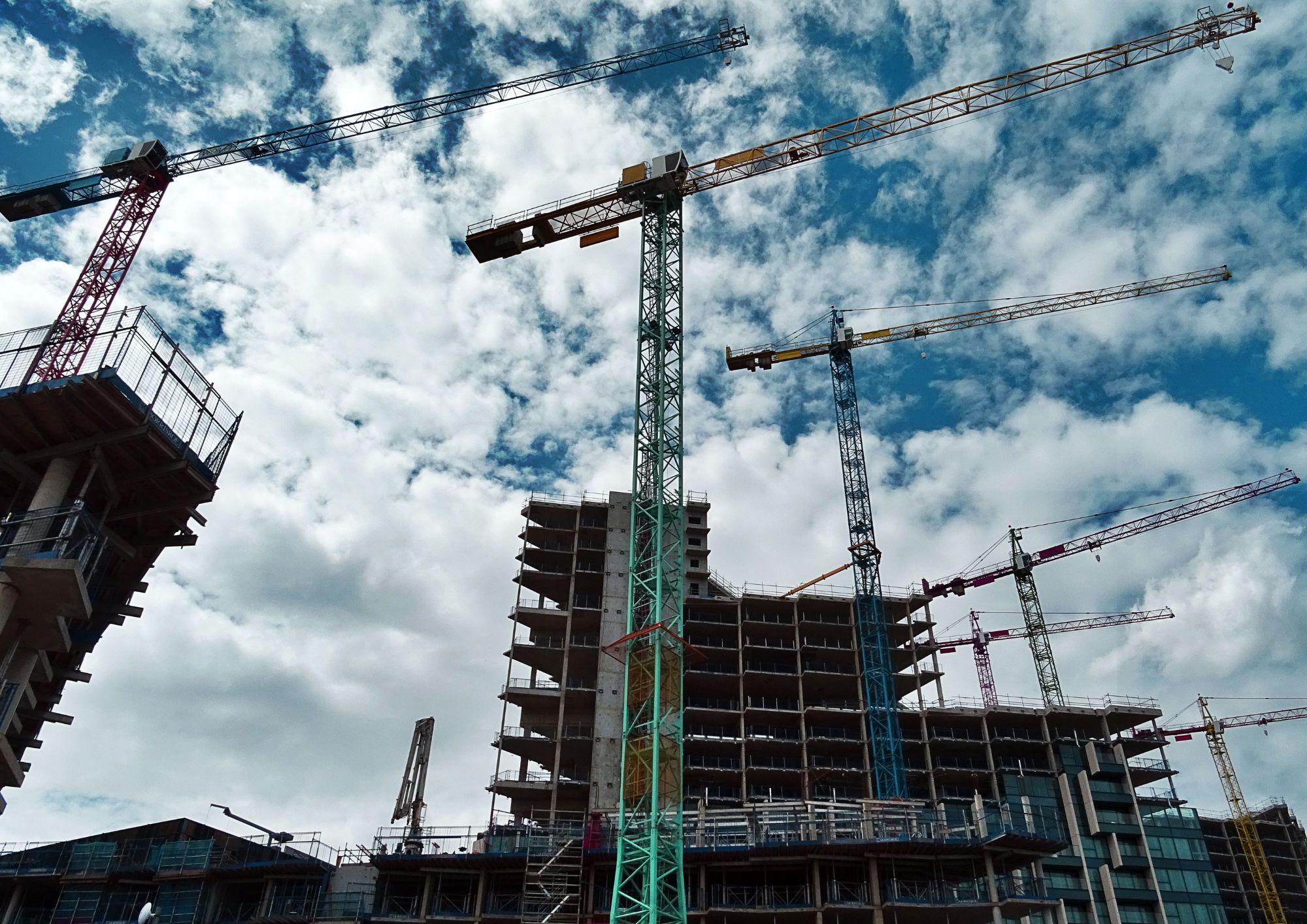April turn for the worse, for construction, as market seesawing continues
Contents |
[edit] Construction Industry Headlines for April
- Contract awards fell by a third to £4.7bn in April, with major sectors suffering.
- April saw very poor results for planning approvals, with just £5.9bn – the lowest month since June 2022.
- Applications returned to normal levels in March with £9.1bn. However, Q1 was still at the lowest level since 2nd Covid lockdown.
Contract awards fell by a third to just £4.7bn in April, with major sectors suffering, according to the latest figures from construction analysts Barbour ABI.
[edit] Infrastructure downturn
Infrastructure was hit the hardest, falling 71% to just £400m in April, the lowest month since May 2020, suggesting initial month-on-month momentum from recent Government budget statements may be stalling. Meanwhile, Residential Contract Awards fell 40% to £1.4bn as the sector continued to struggle with rising interest rates. Hotel and leisure fell by 54% to £200m.
[edit] Comment
Barbour ABI Chief Economist Tom Hall compared April figures to recent highs and lows experienced by the market, commenting:
We are seeing a see-sawing effect in 2023, potentially due to the industry’s uncertainties and constraints. The start of the new financial year saw weaker activity across the board as uncertainty in the wider economy and construction continued. Time will tell whether this is a definitive turn for the worse in April or just another blip in the road.
Elsewhere it was further bad news, with just £5.9bn planning approvals in April pointing to continued uncertainty in the future.
Hall said, “All sectors apart from industrial fell back to below-average levels with many large percentage falls. All things considered; this represents a real famine after March’s £12bn feast.”
Meanwhile, planning applications returned to normal levels with £9.1bn in March. However, taken as a whole, the first quarter of 2023 still showed a significant fall of 22% compared to the previous quarter to the lowest level since the second Covid in 2022.
[edit] Relative Strength Index
Looking ahead at residential, Hall said, “Those searching for a ray of light over residential will remain disappointed. We have seen a 30% increase in applications in April. But, looking across the whole quarter, the situation remains desperately weak, with an extremely low Relative Strength Index demonstrating a dearth of month-on-month momentum and approvals performing poorly.
More positively, the commercial, industrial and healthcare sectors saw activity continuing, and the education sector saw a near-record with £800m.
--Barbour ABI 17:27, 16 May 2023 (BST)
[edit] Related articles on Designing Buildings
Featured articles and news
Latest Build UK Building Safety Regime explainer published
Key elements in one short, now updated document.
UKGBC launch the UK Climate Resilience Roadmap
First guidance of its kind on direct climate impacts for the built environment and how it can adapt.
CLC Health, Safety and Wellbeing Strategy 2025
Launched by the Minister for Industry to look at fatalities on site, improving mental health and other issues.
One of the most impressive Victorian architects. Book review.
Common Assessment Standard now with building safety
New CAS update now includes mandatory building safety questions.
RTPI leader to become new CIOB Chief Executive Officer
Dr Victoria Hills MRTPI, FICE to take over after Caroline Gumble’s departure.
Social and affordable housing, a long term plan for delivery
The “Delivering a Decade of Renewal for Social and Affordable Housing” strategy sets out future path.
A change to adoptive architecture
Effects of global weather warming on architectural detailing, material choice and human interaction.
The proposed publicly owned and backed subsidiary of Homes England, to facilitate new homes.
How big is the problem and what can we do to mitigate the effects?
Overheating guidance and tools for building designers
A number of cool guides to help with the heat.
The UK's Modern Industrial Strategy: A 10 year plan
Previous consultation criticism, current key elements and general support with some persisting reservations.
Building Safety Regulator reforms
New roles, new staff and a new fast track service pave the way for a single construction regulator.
Architectural Technologist CPDs and Communications
CIAT CPD… and how you can do it!
Cooling centres and cool spaces
Managing extreme heat in cities by directing the public to places for heat stress relief and water sources.
Winter gardens: A brief history and warm variations
Extending the season with glass in different forms and terms.
Restoring Great Yarmouth's Winter Gardens
Transforming one of the least sustainable constructions imaginable.

























Comments
[edit] To make a comment about this article, click 'Add a comment' above. Separate your comments from any existing comments by inserting a horizontal line.